Bromeliads are one of the most visually striking houseplants you can grow. Known for their bright, colorful foliage and unique rosette shape, bromeliads bring a vibrant, tropical feel to any space. Though they might look exotic and delicate, these plants are surprisingly hardy and easy to care for — especially if you lean into natural, organic care methods.
In this article, we’ll explore how to care for a bromeliad plant naturally. From choosing the right placement to watering techniques, natural fertilizing tips, and pest control, we’ll help you grow a healthy, thriving bromeliad without relying on synthetic chemicals.
Why Choose Natural Care for Bromeliads?
Using natural care techniques isn’t just about avoiding harsh chemicals — it’s about creating a healthier indoor environment, preserving soil health, and promoting the plant’s natural growth cycles.
Benefits of natural bromeliad care:
- Protects indoor air quality
- Supports organic soil ecosystems
- Safer for pets and children
- Encourages long-lasting, healthy plants
Now let’s dive into the natural care essentials for your bromeliad.
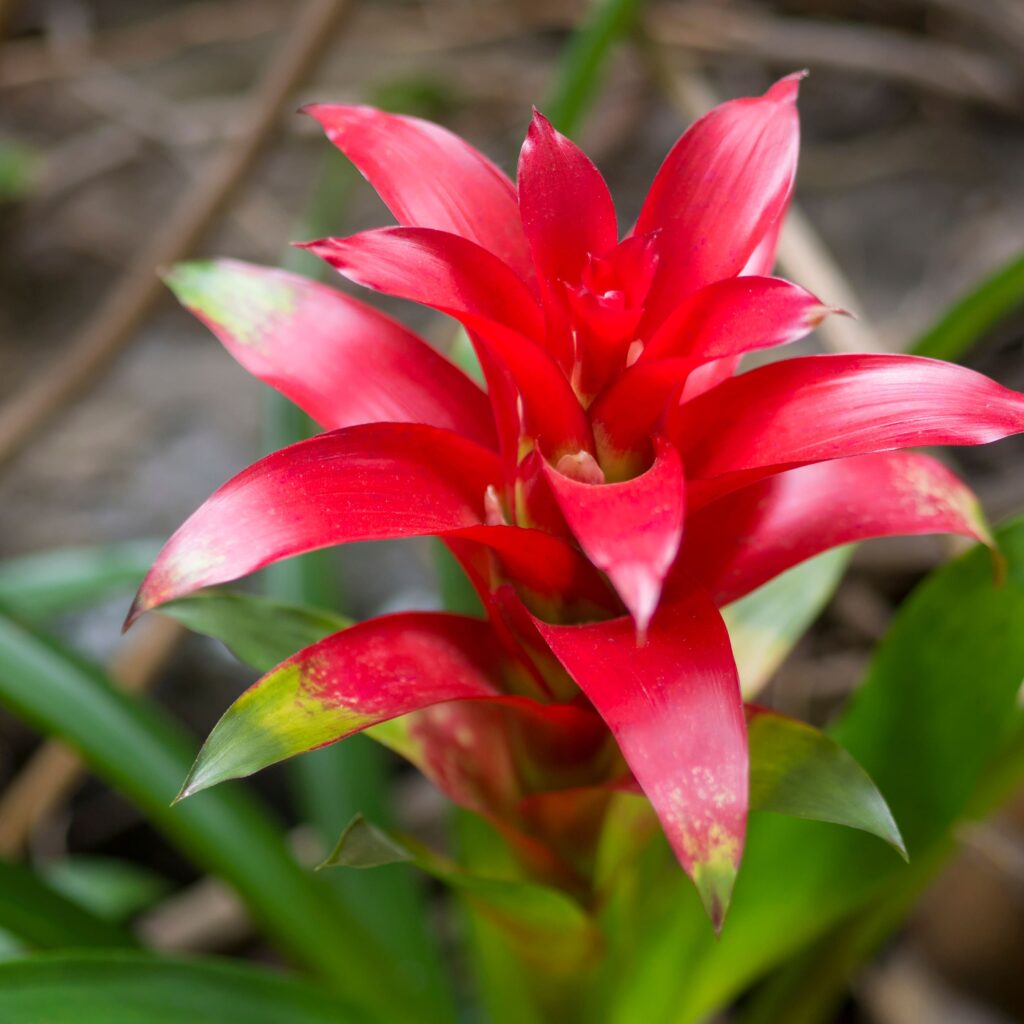
Understanding Your Bromeliad
Before you care for your plant, it’s good to know a little about its nature:
- Family: Bromeliaceae
- Native Habitat: Tropical and subtropical America
- Types: Over 3,000 species including popular varieties like Aechmea, Guzmania, Neoregalia, and Tillandsia (air plants)
- Lifespan: A bromeliad blooms once, then produces offsets or “pups” before the mother plant slowly fades.
Knowing this lifecycle helps you anticipate its care needs and embrace its natural rhythm.
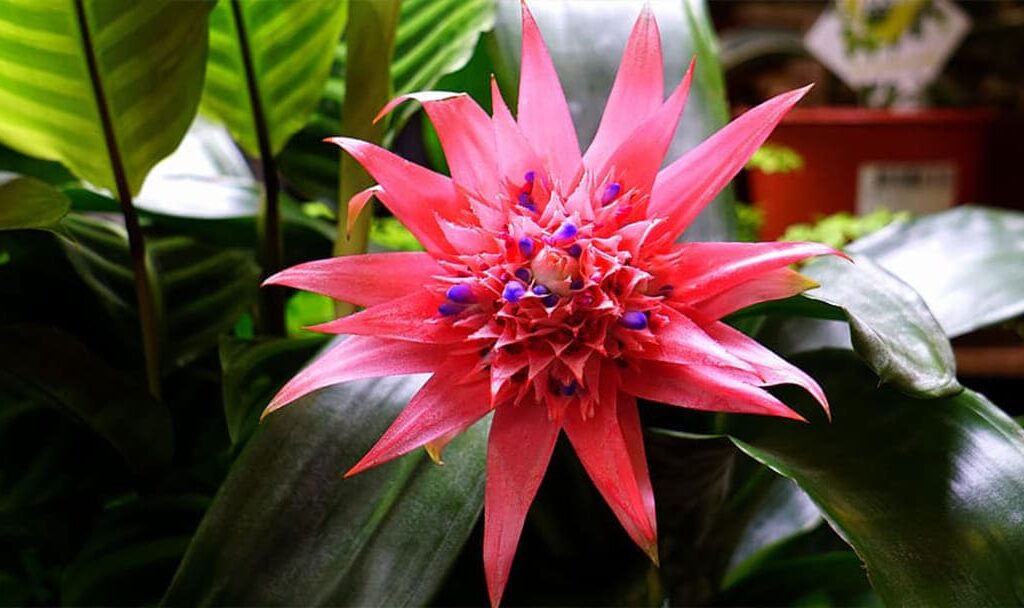
Ideal Light Conditions
Bromeliads love bright, indirect light. Natural sunlight is always better than artificial lighting when possible.
Tips for natural lighting:
- Place your bromeliad near a south- or east-facing window filtered with a sheer curtain.
- Avoid direct midday sun, which can scorch the leaves.
- Rotate your plant every week to ensure even light exposure.
Signs of too much light: Brown, crispy leaf edges
Signs of too little light: Dull, floppy leaves, lack of color
If outdoor temperatures permit, placing your bromeliad in a shady patio corner during warmer months mimics its natural habitat beautifully.
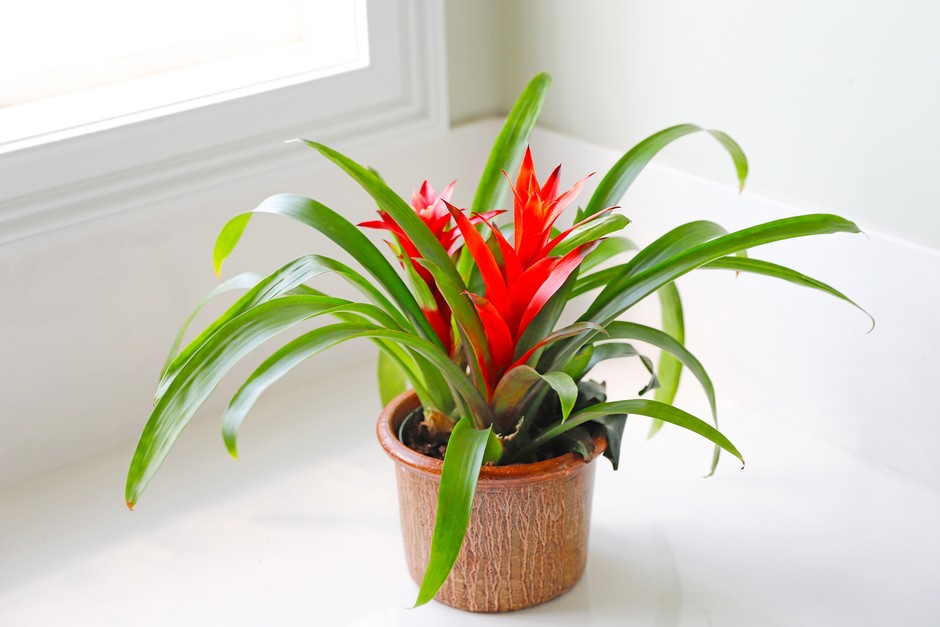
Watering Bromeliads Naturally
Bromeliads are unique in how they absorb water. Many have a central cup (or “tank”) formed by their rosette of leaves, which collects rainwater in nature.
Natural watering guidelines:
- Fill the central cup with fresh, room-temperature rainwater or distilled water. Avoid tap water if it’s high in chlorine or fluoride.
- Flush out the cup every 7–10 days to prevent stagnation and bacteria buildup.
- Water the soil lightly when it feels dry, but never let it stay soggy.
- Mist the plant occasionally with water to raise humidity naturally.
Pro Tip: Collect rainwater for your houseplants — it’s the most natural, mineral-balanced option you can offer.
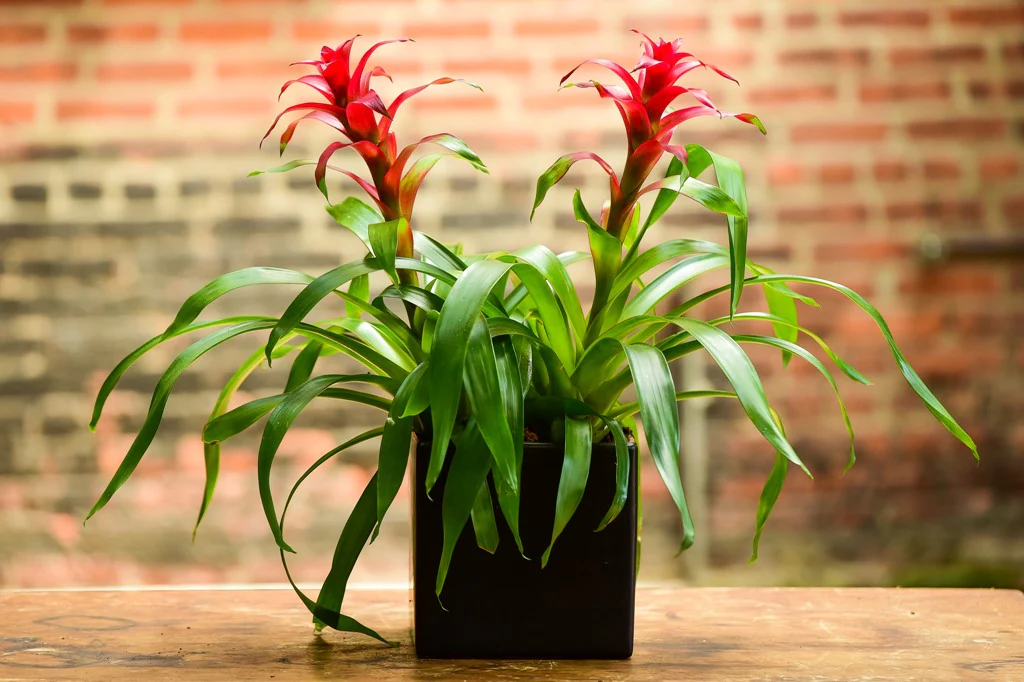
Soil and Potting Naturally
Bromeliads prefer light, airy, well-draining soil to prevent root rot. Avoid heavy garden soil or chemical-laden commercial mixes.
Natural soil mix recipe:
- 1 part organic orchid bark or coconut coir
- 1 part organic peat moss
- 1 part perlite or sand
Potting tips:
- Use unglazed clay or terracotta pots for natural airflow.
- Ensure proper drainage holes at the base.
- Avoid overcrowding multiple pups in one pot.
Repot pups once they’re about one-third the size of the mother plant to encourage independent growth.
Natural Fertilizing Techniques
While bromeliads are light feeders, occasional fertilizing encourages healthy growth and vibrant blooms.
Natural fertilizing methods:
- Use diluted organic liquid fertilizers like seaweed extract, fish emulsion, or compost tea every 4–6 weeks during active growing months (spring-summer).
- Apply the fertilizer to the soil and central cup at half strength.
- Stop feeding during fall and winter when growth slows.
Homemade compost tea recipe:
- Steep 2 cups of well-aged compost in 1 gallon of rainwater for 24 hours.
- Strain and dilute with equal parts water.
- Use to lightly water soil or fill the central cup.
Encouraging Natural Blooming
Bromeliads typically bloom once in their lifetime — and though it can take a while, you can gently nudge them with natural methods.
How to naturally stimulate blooming:
- Place your plant in a loosely sealed plastic bag with a ripe apple or banana for 7–10 days. These fruits release ethylene gas, which triggers blooming.
- Afterward, return it to its usual bright spot and wait patiently.
Note: Only mature bromeliads (1–3 years old) will respond to this method.
Natural Pest Control
Bromeliads are relatively pest-resistant, but mealybugs, scale, and aphids can occasionally appear.
Natural pest management tips:
- Wipe leaves with a soft, damp cloth regularly.
- Spray a mild neem oil solution (1 tsp neem oil + a few drops of liquid soap in 1 liter of water) on infested areas.
- Introduce natural predators like ladybugs if growing outdoors.
Avoid chemical pesticides which can damage the delicate leaves and disrupt soil health.
Managing Bromeliad Pups
After blooming, bromeliads focus their energy on producing pups — baby plants that grow at the base of the mother plant.
Natural pup care:
- Let pups grow until they reach one-third to half the height of the mother plant.
- Gently separate pups with a clean, sharp knife.
- Plant pups in small pots with fresh, organic soil mix.
- Water lightly and keep in bright, indirect light.
This natural propagation process ensures you’ll always have new plants to grow or gift.
Seasonal Bromeliad Care
Adjusting your care routine with the seasons ensures your bromeliad stays healthy year-round.
Spring-Summer:
- Increase watering frequency.
- Mist leaves and cups regularly.
- Move outdoors to a shaded, humid patio if possible.
Fall-Winter:
- Reduce watering.
- Keep the central cup filled with fresh water but avoid stagnation.
- Move away from cold drafts and maintain temperatures above 60°F (16°C).
Common Bromeliad Problems & Natural Fixes
| Issue | Natural Solution |
|---|---|
| Brown, crispy leaves | Increase humidity with pebble trays or misting |
| Pale, droopy leaves | Move to brighter indirect light |
| Stagnant cup water smell | Flush the cup weekly with rainwater |
| Mealybugs/Scale | Wipe with neem oil or soapy water |
Conclusion
Caring for a bromeliad plant naturally is a rewarding, low-maintenance way to enjoy a piece of the tropics in your home. By focusing on organic practices — like using rainwater, natural fertilizers, and non-toxic pest solutions — you nurture not just your plant, but a healthier home and environment.
With patience, the right placement, and a little natural care, your bromeliad will reward you with vivid foliage, striking blooms, and even new generations of pups for years to come.

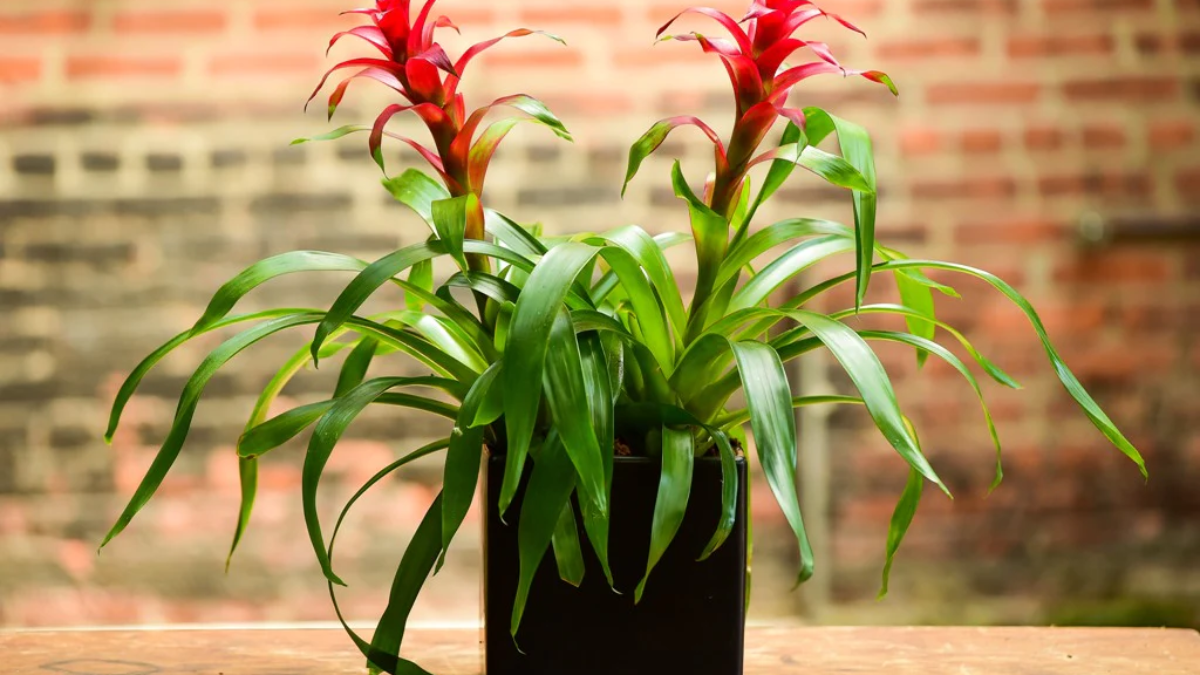




Leave A Comment